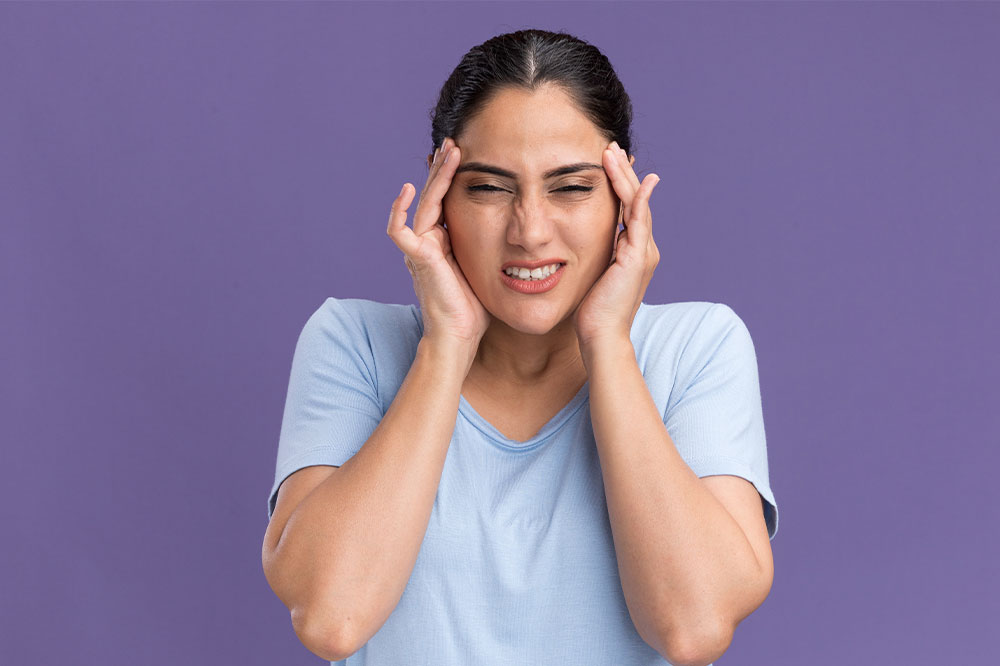Recognizing the warning signs of a seizure

Seizures are a neurological condition that affects millions of people worldwide. They can occur at any age and can be caused by various factors, including genetics, head injuries, and infections. Seizures can be classified into two main categories: generalized and partial. Generalized seizures affect the entire brain, while partial seizures affect only a specific part. Recognizing the warning signs of a seizure is crucial for timely intervention and ensuring the safety of the affected person.
Aura or premonitory symptoms
Premonitory symptoms or aura are one of the common symptoms of seizures. The intensity, type, and presence of these symptoms can differ from person to person. Individuals may experience premonitory symptoms in the form of unusual smiles, tastes, visual disturbances, unexplained anxiety or fear, a sense of deja vu, or sudden mood changes. It is essential to identify and recognize these symptoms during the early stages. Identifying the early signs provides an invaluable opportunity to prepare for a seizure.
Altered sensations
A person might experience a wide range of sensory disturbances because of seizures. This includes a tingling sensation and numbness in various parts of the body, an altered perception of pain, touch, or temperature, and a sense of pressure or heaviness. These sensations may be restricted to specific body parts, or they may be widespread. It is important to be aware of altered sensations as it can help the individuals anticipate the next time a seizure is about to occur and make the required preparations.
Muscle weakness or jerking movements
Another common sign of seizure is jerking movements or muscle weakness. These warning signs make dealing with seizures even more difficult. Muscle weakness can make it challenging to perform daily tasks and stick to a routine. It also increases the risk of accidents and mishaps like frequent falls. Some patients might have to deal with uncontrollable twitching or jerking movements of the face, limbs, or other body parts. Taking note of these movements can help in creating and nurturing a safe environment for the patients, helping prevent mishaps and helping caregivers prepare for oncoming seizures.
Loss of consciousness or staring spells
Loss of consciousness or staring spells are classic signs of certain types of seizures, such as absence seizures. These seizure episodes often mean the patient momentarily appears unresponsive and might not react to any kind of external stimuli. They might even appear to be blankly staring into space. These episodes are often brief, lasting only a few seconds, but can occur multiple times throughout the day. Identifying these episodes is crucial for accurate diagnosis and appropriate management.
Repetitive or involuntary movements
Patients might experience repetitive or involuntary sudden movements that are also known as convulsions or seizures. The movements are of various types and can be rhythmic or abrupt. Seizures can manifest as repetitive jerking of limbs, automatic chewing or lip-smacking movements that the patient does not seem to have control over, rapid eye blinking, and rhythmic shaking of hands, feet, or other body parts. All of these motor symptoms may be accompanied by signs like altered consciousness. These movements are more commonly seen in patients experiencing generalized tonic-clonic seizures.
Changes in behavior or mood
Seizures can also affect an individual’s behavior and mood. Some warning signs may include sudden irritability, aggression, confusion, or unexplained changes in personality. These behavioral changes may be noticeable to the person experiencing the seizure or to those close to them. Understanding that these changes can be indicative of an impending seizure can enable timely support and appropriate interventions.
Sensory overload or triggers
Certain stimuli or triggers can precede a seizure in individuals with photosensitive epilepsy or other sensory sensitivities. These triggers can include bright or flashing lights, specific sounds or frequencies, certain patterns, or even strong smells. Recognizing and avoiding these triggers can help minimize the risk of seizures and promote a safer environment for individuals susceptible to sensory overload.
Seizures can be a scary and unpredictable experience, but knowing the warning signs can help prepare one for them and seek attention from professionals if necessary. If you or someone you know experiences any of the warning signs of seizures, it is important to consult a specialist immediately. Remember, early detection and treatment can make all the difference in managing seizures.

